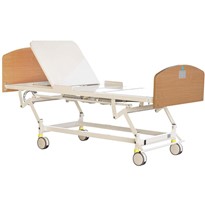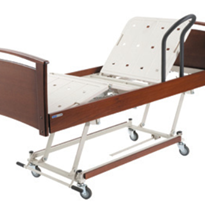Adjustable beds provide the perfect solution for personalised comfort. They are commonly used in hospitals to alleviate pain and aid recovery through elevation, and in nursing homes to enhance mobility for residents. While these features make adjustable beds ideal for healthcare facilities, they also offer great benefits for home use.
The primary advantage of adjustable beds is their ability to improve sleep, which is essential for rejuvenation and survival. If sleeping on a flat surface is difficult, the adjustable angle of the bed may work wonders for you.
How Adjustable Beds Improve Health
For thousands of years, people have slept flat on their backs as it aligns the spine (assuming the mattress is suitable). However, not everyone finds this position comfortable, and some individuals may experience pain and snoring.
An adjustable bed allows for customised sleep positions, including elevating the head, legs, or both, at different angles to maximize comfort.
The reason for this is simple - not everyone sleeps well on a flat surface. Some people require elevation to sleep comfortably, and others may use multiple pillows to achieve the same effect.
In addition to comfort, adjustable beds offer several health benefits. They improve mobility by making it easier to get in and out of bed, enhance breathing by opening up the airway, and promote circulation by allowing the heart to pump blood more efficiently throughout the body.
Here’s a rundown of the health benefits of adjustable beds:
Better Sleep
According to estimates, we spend around one-third of our lives sleeping. Sleep is just as crucial to our health as proper nutrition, hydration, and exercise. During sleep, our brain and body have a chance to recover and rejuvenate, so a poor night's sleep can leave us feeling sluggish and groggy.
Anything that can enhance the quality of our sleep is beneficial to our overall health. Adjustable beds are one such solution, as they increase comfort and reduce tossing and turning, ultimately promoting better sleep.
Enhanced Mobility
An adjustable bed that raises the upper body can significantly improve mobility by making it easier to get in and out of bed. For those who struggle with mobility issues, an adjustable bed allows for creating a position that reduces strain and stress on the body.
Individuals with conditions such as arthritis, sore joints, muscle aches, and back pain can benefit greatly from the added mobility that adjustable beds offer. By elevating the upper body, an adjustable bed can make it easier to sit up and get out of bed without experiencing discomfort or pain.
Improved Breathing
Numerous studies have explored the impact of elevated sleeping on breathing. One such study found that elevating the head of the bed can reduce sleep apnea by preventing airway collapse. Another study found that elevation can have a similar effect on both apnea and snoring.
If you or your partner experience snoring or difficulty breathing while sleeping, adjusting the position of your head with an elevated bed may help alleviate these symptoms.
Improved Circulation
Circulation problems in the legs and feet are common when sleeping, and people with conditions such as oedema (swelling in the feet) may benefit from elevating their feet while sleeping to improve blood flow. However, using only pillows and cushions to achieve this can be challenging.
An adjustable bed makes it easier to raise the feet above heart level, improving blood flow and reducing swelling in the feet. Unlike using pillows and cushions, there is no risk of the legs falling flat while asleep, ensuring a comfortable and safe position throughout the night.
Relief From Back Pain
For individuals who suffer from back pain, an adjustable bed can be life-changing. By angling the upper body, an adjustable bed can relieve pressure on the lower, middle, and upper back, improving both breathing and mobility.
In particular, adjustable beds are excellent for relieving lower back pain, as a pivoted sleeping position can reduce pressure on the hips and lower spine. By providing customisable support, an adjustable bed can help alleviate pain and discomfort, allowing for a more comfortable and restful sleep.
Reduced Stress and Anxiety
When feeling stressed and anxious, an uncomfortable bed can worsen these feelings and cause restlessness. An adjustable bed can make it easier to get comfortable, reducing tension and anxiety related to discomfort and restlessness.
By providing personalised support, adjustable beds can also improve the overall comfort of your bedroom, making it a more pleasant and calming environment. This can positively impact your relationship with your bedroom, making it a more inviting and relaxing place to spend time.
What's the Best Type of Mattress for an Adjustable Bed?
To get the most out of an adjustable bed, you need a mattress that is flexible, durable, and comfortable. A mattress that is too thick may limit its flexibility and durability, so it's best to choose a thinner mattress.
Memory foam mattresses are a popular choice for adjustable beds because they offer flexibility by moulding to your body shape through the heat. They provide comfort and support, which can help ease aches and pains. However, they can retain body heat, which may not be ideal in warmer climates.
Latex mattresses are also flexible and can quickly return to their original position. They use body weight to mould and shape your body to relieve pressure points, making them a good option for those who prefer a cooler sleep.
Innerspring mattresses are not all compatible with adjustable beds, as bending the mattress could result in broken springs. However, pocket sprung mattresses can work well with an adjustable bed when paired with a memory foam mattress topper.
Hybrid mattresses, which have a pocket sprung base topped with memory foam, offer a good compromise between spring and memory foam.
Orthopaedic mattresses feature grooves or air chambers cut into the foam, which soften the mattress to fully support more tricky areas for your upper and lower back.
Castellated foam mattresses are the most flexible option for adjustable beds. The grooves in the base foam enable the mattress to bend and adjust freely with reduced strain on the foam.
The Best Sleep Positions When Using An Adjustable Bed
If you are in a position that keeps your spine straight and distributes your weight evenly, there is no right way to sleep in an adjustable bed. But some positions are helpful
Side Sleepers
This is one of the most common and healthiest ways to sleep, as it keeps your airways clear, reduces the risk of snoring and sleep apnoea, and keeps your spine straight. But sleeping on an adjustable bed can lessen your hips and neck pressure.
Back Sleepers
This is the second most common way to sleep as it can improve your posture and spinal alignment, relieving back pain. However, it puts a lot of pressure on your lower back and neck, so an adjustable bed you can lie on an incline will relieve the stress.
Combination Sleeping
This is where you change your position throughout the night, so you need a bed with good support. You have better circulation, spinal alignment, and decreased snoring, but you often have issues with your neck and back, so an adjustable bed gives you the freedom to sleep to your needs.
Stomach Sleeping
Although it does decrease snoring, or if you suffer from sleep apnoea, a minor common position can lead to poor posture and muscle/joint stiffness. We don’t suggest an adjustable bed for this position, as elevating your head and feet can pressure your spine.
Head Raised Position
Keeping your airways open and your spine straight helps reduce snoring or acid reflux.
Feet Raised
This helps improve blood circulation, lessening the swelling in your legs, lower back pain, and knee pain.
Head and Feet Raised
This enables you to promote an even weight distribution, allowing better posture and improving spinal alignment. Getting in and out of bed in this position is also easier.
Zero-Gravity
This is good for those suffering from back pain, joint issues, or sore muscles, as it evenly distributes your weight and relieves your pressure points.








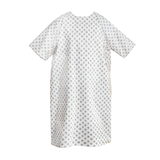
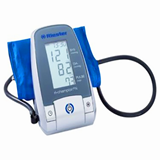
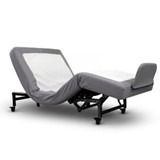

-205x205.jpg)
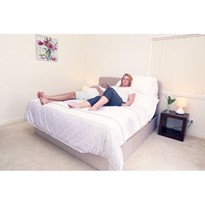
-21-205x205.jpg)
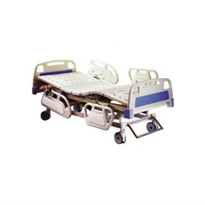
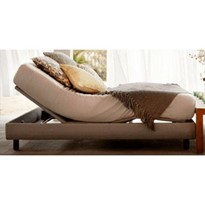
(18)-205x205.jpg)
